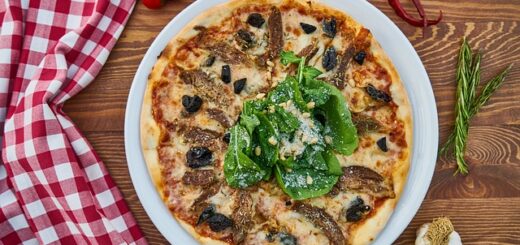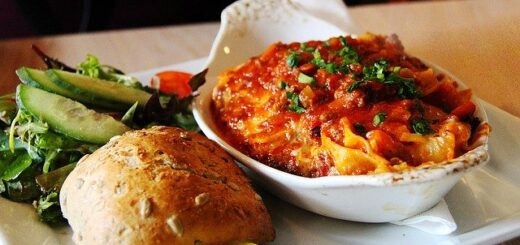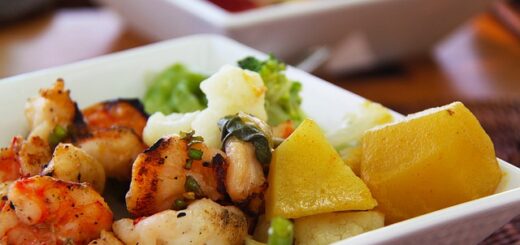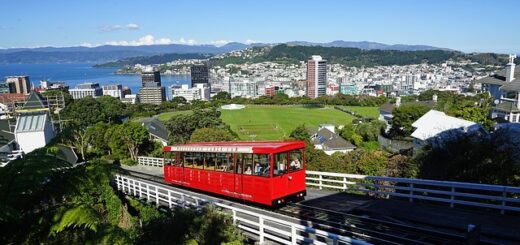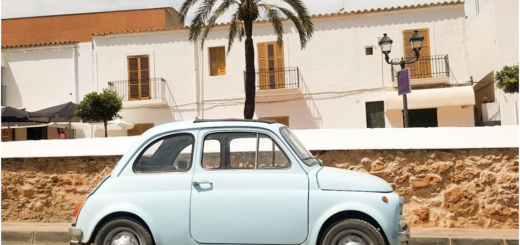Food of Fiji: What to Eat in Fiji Trip?
What is the traditional cuisine in Fiji?
Despite its remote location in the South Pacific, Fiji has an amazing culinary tradition. Being surrounded by the ocean on all sides, native Fijians depend a lot on seafood. Seafood dishes are made from lobsters, oysters, octopus, crabs, squids, prawns, sea cucumbers. Yams and tubers like cassava and taro roots provide calories. These are grown in Fiji and are a staple diet that even stars in resorts. Dalo is a type of corn that is grown in Fiji, and its leaves called Rourou are also used in cooking. They also use wild herbs, forest ferns in food of Fiji. They use Bele, which is a weed, and Otta, which is a forest fern, in their food preparation. Meats are rare, and in ceremonies and functions, pig, chicken, and lamb are prepared with traditional slow-cooking techniques.
Coconut is used in most dishes of Fiji, either in the form of coconut water or coconut cream. Fruits like banana, pawpaw (papaya) are grown all year, but others like pineapple, guava, lemon, oranges are available seasonally. Fijians drink Yaqona or Kava before dinner or on ceremonial occasions. Yaqona is made from powdered roots of the Yaqona plant. Drinking Yaqona is not limited to Fiji, but is spread across islands of the South Pacific. Beer, wines, rums, soft drinks are mostly available in resorts. These are mostly imported, but locally brewed beer is made from pineapple, oranges, and watermelon. Fijians use traditional cooking techniques like underground ovens or cooking over an open fire to prepare traditional meals. Here is a Fiji travel food guide that covers that talks about famous food of Fiji that you must try at least once in lifetime:

Popular Fijian dishes
Kokoda
Kokoda is a sort of a starter and is served in a coconut shell, clamshell, pineapple, or bamboo. Kokoda is a raw fish dish that is made from mahi-mahi, mackerel, or any local fish. The fish is marinated in lime or lemon juice, and this is the process that cooks the fish and makes it fit to be eaten. It is soaked in coconut milk and garnished with capsicum, tomatoes, spring onion, red onion, and chilies, salt to make it spicy.
Lovo
Lovo is like a barbeque meal to Fijians and one of the most popular food of Fiji. Lovo is more like a traditional cooking method, and not a meal in itself. In a lovo, a wide variety of food is prepared over slow cooking method. Preparations for a lovo are generally made on Sunday mornings, and it takes two to three hours to cook a lovo meal. Fijians cook a lovo for wedding ceremonies and festive occasions. Here an earthen pit is made, and it is filled with coconut husk and wood. The wood is then lit on fire and covered with a layer of volcanic rocks. Fish, meats, vegetables are marinated overnight and wrapped in banana or taro leaves. Corn is also added to this, and these items are placed over hot stones. Yams, taro, and cassava are generally the most common food that is prepared over a lovo. The pit is then filled with palm leaves and dirt and sealed.
Rourou
Rourou is the leafy part of the taro or dalo plant. It is also edible and is prepared as a side dish to complement the main dishes. Rourou has a taste similar to that of spinach. It is either stewed or cooked in coconut milk and served as a soup. Rourou is also filled with a mixture of tuna, onion, chili, coconut milk, and served as Fijian Rourou Peti.
Palusami
Palusami is prepared in a lovo and one of the most famous food in Fiji. Palusami is prepared by coating taro leaves with coconut cream and filled with meats, onion, salt, chilies. Corned beef is mostly used, as local meat is not available. Seafood is also used for the stuffing, and onions, chilies, salt are used to make it spicy and flavorsome. It is then cooked in a traditional lovo to impart flavors and make it an authentic dish of Fijians.
Cassava chips
Cassava is a root vegetable that is the main ingredient in many of the Fijian dishes. Cassava is similar to potato and in many countries, it is called tapioca or sago. Cassava chips are made by slicing the cassava into chips and boiling them in oil. The chips are garnished with salt and chilies and offered in Fiji as a savory snack in many resorts.
Topoi
The native of Fiji uses cassava to make many dishes and Topoi is one of the most delicious. Topoi is a sort of steamed dumpling. Here, a mixture of grated cassava, coconut cream or milk, sugar, and coconut is rolled into dough-shaped balls. The balls are steamed or boiled in hot water and cooked until soft. After the dumplings are cooked, the balls are taken out, and the remaining water is further cooked with coconut milk and grated cassava to make it into porridge or soup. The dumplings are dipped into the porridge or consumed independently with tea or butter and jam. Topoi are generally consumed as a breakfast or brunch item in Fiji.
Duruka
Duruka is a sugarcane type of plant, whose flower is the edible part and one of the highly recommended food in Fiji. It is used in making curries and cooked in coconut milk. Duruka is also called Fijian asparagus and its outer sheath is removed before eating and preparing various dishes.
Nama
Nama is not a name of a food dish but actually, it is a kind of seaweed that grows naturally in Fiji. They look like grapes and are popular as sea grapes because they grow in the sea. Nama is used for garnishing salads or added to coconut milk to give it a distinct flavor and taste. Nama is used with other ingredients like coconut milk, grated coconut, lemon juice, salt, chilies to make a thick paste called kora.
Vakalavalava
Also called Cassava cake, Vakalavalava is a type of dessert that is made in Fiji. A sweet batter is made using freshly plucked cassava, shredded coconut, sugar, and butter. This batter is then baked in a pan. After it is baked, the outer crust turns golden. The cake is then sliced into cakes and served with a topping of ice cream. To add more flavors, ingredients like mashed bananas, custard, condensed milk, are added to the batter and then baked. Vakalavalava is generally a breakfast item, but it is also consumed in the evening and dessert in the night after having dinner.
Lolo buns
Lolo buns are baked bread buns that are sweet and with a coconut flavor. They are a traditional Fiji delicacy. They are a typical breakfast item and can be had with hot cocoa or tea. It is also served as a side dish in Fiji making it one of the best food from Fiji. In this, a batter of flour, sugar, eggs is baked with coconut milk. They are baked until they are golden in color. The distinct coconut flavor in these lolo buns and the sweetish taste is what make lolo buns so special in Fijian cuisine.
Babakau
In Fiji often the simplest of dishes are made in such a way that their taste lingers on. Babakau is one such dish that is a breakfast item. It is nothing but a deep-fried item that is so sweet. While preparing Babakau, the dough is made of flour, water, sugar, and yeast. This kneaded dough is then cut into triangular pieces and deep-fried in oil. The simplicity of Babakau is what makes it so delicious. But to make it even tastier, other ingredients are added such as grated coconut, Babakau looks like golden triangular nuggets when served. Grated onions also impart a sweet flavor to Babakau, and it is a secret that most Fijian women know of. Babakau is served along with butter, jam, along with some lime or lemon wedges on the side to balance the sweetness.
Ika Vakalolo
Seafood dishes are a must-try on your trip to Fiji. One of them is Ika Vakalolo which is one of the top food from Fiji. It is a spicy seafood dish that is eaten in Fiji. Fish fillets are pan-fried and then put in a pot with cabbage leaf under it. It is then cooked with tomatoes, onions, and coconut milk. Spices like chilies are added to make it more flavorful and spicy. All these ingredients in a pot are then brought to a boil and served with lemon juice. This seafood dish has a mixture of coconut and spicy flavors and is a favorite in many resorts in the Fijian archipelago.
Kava
Kava is made from crushed roots of the yaqona tree. The pulp is then put in a cloth and strained with water. The strained drink is of a muddy appearance. Kava is a traditional Fiji drink, which is commonly drunk in ceremonies. It has to be consumed in small quantities as too much consumption leads to liver damage. Special kava ceremonies are held for guests and this drink is then prepared in front of them. It leaves a bitter-sweet taste in the mouth, and often guests feel numbness around the mouth, although this is just temporary.
Fish Lolo
Fish Lolo is a Fijian fish curry made from fish and coconut cream. Fish that are commonly found in Fiji waters are used for this preparation. Cod, catfish, mahi-mahi are boiled with coconut milk, sliced onions, chopped tomatoes and simmer on a low flame till the dish is prepared. Many other ingredients are used to make fish lolo, and they are mashed sweet potatoes, rice, etc. Spices like cinnamon, cumin seeds, garam masala, are also used to give it an Indian flavor.
Fish Chop suey
The Chinese influence on Fiji cuisine is seen in dishes like Fish Chopsuey. Many resorts in Fiji prepare this meal. You can get it at many other places in Fiji like restaurants. Fish is prepared in Chinese sauces like oyster sauce, and ingredients like carrots, Chinese cabbage, ginger, garlic paste, onions, and chilies, chicken is used.
Tavioka
Fiji uses cassava in so many ways in preparing a range of exotic dishes thereby making it one of the highly recommend Food of Fiji. Tavioka is made from baked, boiled, or grated cassava. This is then boiled with coconut milk along with mashed bananas. Tavioka is a Fijian food that is rather heavy and is often eaten as a sort of dessert dish.
FAQ
What do Fijians eat for breakfast?
Fijians eat traditional dishes for breakfast such as Babakau, Topoi, Vakalavalava. Many people have started eating eggs, bread, tea, coffee, cereals along with these traditional breakfast items. They eat sausages made from lamb or chicken, and seafood dishes also. In many homes, traditional breakfast consists of boiled rice, fresh fish, biscuits, tea, and pancakes.
What do Fijians eat for lunch?
Cassava or taro is eaten for lunch in traditional homes in Fiji. It is either steamed or boiled and is eaten with dal, rice, curry, or soup. Salads and chutneys are also eaten along with this. Sometimes tea is also consumed in lunch.
What do Fijians eat for dinner?
Stews, soups, curries, stirfried veggies are the many dishes that are eaten as dinner. Sometimes lovo meal is also included in dinner. Dal, rice, salads are also eaten as dinner. Traditional Fijians also eat wild forest produce in their dinner. Wild herbs, forest ferns, mint, coriander are used to garnish many dishes. Tinned food like baked beans, sardines, mackerel, tuna, corned beef, condensed milk is nowadays commonly used in most Fijian homes.
What is the traditional drink in Fiji?
Yaqona or Kava is a traditional Fijian drink made from the sundried root of the pepper tree. The root is made into a pulp in a pestle and mortar and it is then strained with water in a cloth. The remaining water is then collected in a large vessel, and drank in ceremonial occasions and community feasts.
Which beer can I try in Fiji?
You can try Fiji Bitter and Fiji Gold in Fiji. Locals also prepare a sort of rum called Bounty. Wines come from nearby Australia and New Zealand.
Which are the must-try dishes in Fiji?
Kokoda, Vakalolo, Palusami are the must-try dishes in Fiji. Try the Lovo feast which is also an essential thing to try in Fiji. In a Lovo feast, many dishes are prepared and it is like a big earthen oven, where yam, pig, chicken, fish, pork, veggies, are prepared in the traditional Fijian way of slow cooking. Food is wrapped in banana leaves and the smoky aroma from volcanic rocks and fire makes the food delicious.
What’s next waiting for you?
Now you know the most popular food of Fiji, you can try these Fijian dishes in your upcoming tour. Whether you want to try street food from Fiji or local cuisine of Fiji, above travel guide covers everything. Check our other travel food guides that talk about famous food to try near Fiji.
